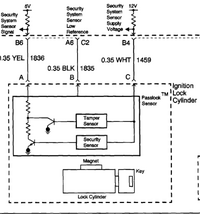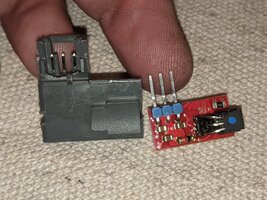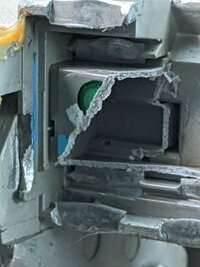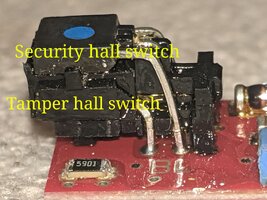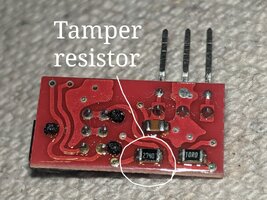So yesterday I took a junkyard P10 PCM from a 2002 built in 06/01, the same year truck as my 4. 2, a 2002 built in 10/01 and installed it and did the security relearn. First time doing this for me. I had already interrogated this junkyard PCM on the kitchen table, connecting C1-20 and C1-21 to a 12 volt jump pack and hooked up a serial data line to an elm327. Used a couple of OBD apps like OBD Fusion and a serial terminal to extract VIN number and all trouble code data there was to be had. Of course there were a lot of immature codes due I presume to being so minimally connected and lacking all manner of sensor inputs it expects to see. Also pulled the calibration IDs along with the calibration ID verification numbers. Primarily I wanted a baseline.
The relearn took 3 cycles and I wasn't closely attending the operation so there was a little extra time between cycles in the routine and it wound up taking 38 minutes from commencement to engine startup. So here's the twist. I recorded the class 2 data stream of the entire security relearn procedure for exploration.
I am now examining that data. The first thing I see that may be useful simply confirms what the standard security relearn directions state, that is that the PCM and BCM and I would imagine the IPC as well must have communications established across the class 2 serial data bus. This seems obvious but I can see this happening to someone who doesn't know how to verify communications. The result would be a security light that does not shut off after 10 minutes. Why?? I can see in the class 2 data that after the 10 minute time period it is the PCM that sends a serial data message to 'Vehicle Security', the BCM acknowledges this message and then the BCM turns off the security light. So if that PCM message doesn't get to the BCM I would expect to see the security light to simply remain on.
So a reasonable precursor to doing a security relearn could be;
(A) Verify PCM to IPC communications by observing the IPC for a transmission range position indication and the presence of a fuel tank level indication as these are both PCM to IPC serial data functions.
(B) Verify BCM to IPC serial data communications by observing a high beam indicator light and a Parking Brake indicator light. These are also serial data communications that go from BCM to IPC.
I would expect it safe to believe that if both PCM and BCM have proven communications with the IPC then it follows that the PCM and BCM have communications established.
The relearn took 3 cycles and I wasn't closely attending the operation so there was a little extra time between cycles in the routine and it wound up taking 38 minutes from commencement to engine startup. So here's the twist. I recorded the class 2 data stream of the entire security relearn procedure for exploration.
I am now examining that data. The first thing I see that may be useful simply confirms what the standard security relearn directions state, that is that the PCM and BCM and I would imagine the IPC as well must have communications established across the class 2 serial data bus. This seems obvious but I can see this happening to someone who doesn't know how to verify communications. The result would be a security light that does not shut off after 10 minutes. Why?? I can see in the class 2 data that after the 10 minute time period it is the PCM that sends a serial data message to 'Vehicle Security', the BCM acknowledges this message and then the BCM turns off the security light. So if that PCM message doesn't get to the BCM I would expect to see the security light to simply remain on.
So a reasonable precursor to doing a security relearn could be;
(A) Verify PCM to IPC communications by observing the IPC for a transmission range position indication and the presence of a fuel tank level indication as these are both PCM to IPC serial data functions.
(B) Verify BCM to IPC serial data communications by observing a high beam indicator light and a Parking Brake indicator light. These are also serial data communications that go from BCM to IPC.
I would expect it safe to believe that if both PCM and BCM have proven communications with the IPC then it follows that the PCM and BCM have communications established.


 Related to this, would be the "unforgiving thread" on the "no start / unknown driver" which some how tumbles down the same type of thing with "language difficulties" with "multitudes" of PCM and BCM, plus maybe ignition switch / key sensor sensor.... but can't get out the other "end". Maybe he needs you for a "real road trip"...
Related to this, would be the "unforgiving thread" on the "no start / unknown driver" which some how tumbles down the same type of thing with "language difficulties" with "multitudes" of PCM and BCM, plus maybe ignition switch / key sensor sensor.... but can't get out the other "end". Maybe he needs you for a "real road trip"... 